If you walk into almost any professional garage that operates in northern climes, (dealerships, repair shops, etc.), you’ll find one thing in common: garage exhaust systems.
These systems direct the spent exhaust away from the shop area. A setup like this might not be a big issue with southerners or during balmy weather where you can keep the garage door wide open—but for many of us, winter doesn’t really allow for it.
Hence the need for some way to evacuate exhaust while you work on your car or truck.
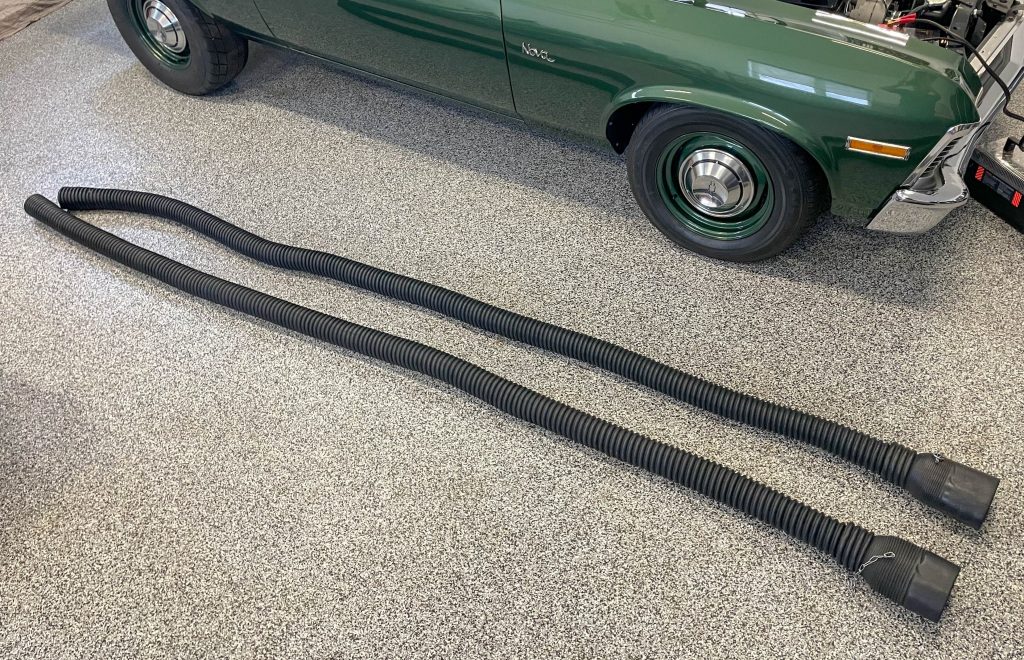
A garage exhaust system certainly isn’t a complex tool.
Sure, a makeshift system could be hacked together with something like clothes drier ducting, but the reality is, it won’t last long in an automotive exhaust environment—which is why Summit Racing offers a big lineup of different garage exhaust systems and pieces, all based on high quality reinforced garage exhaust hose.
All of the hoses you’ll find at SummitRacing.com are manufactured from rubber (although some manufacturers offer fabric/wire composite hoses, often necessary when working on diesels with regeneration cycles). These hoses have temperature ratings ranging from 600 degrees F all the way up to 1,000 degrees F. Hoses are available in two to five inch diameters; lengths range from six to 20 feet. That collection should work for almost any application.
Once you have the hose, you’ll need something to adapt it to the tailpipes on your car—and some vehicle exhaust systems are more difficult than others.
Take my Nova, for example.
The layout of the rear suspension simply doesn’t allow for tailpipes. As a result, the exhaust ends with short three inch diameter turnouts welded to the end of the mufflers, just ahead of the rear axle. An adapter is necessary to link the garage exhaust hose to the tailpipes.
Here too, Summit Racing has you covered. There are all sorts of different garage exhaust hose adapters available. All are manufactured from high quality, temperature resistant rubber. Many also have chains attached, which lets you anchor the adapter directly to a chassis component.
How do the adapters attach to the hose? That’s easy: They simply screw into place. Some adapters are made so that they fit multiple hose diameters. To fit, you either screw the adapter into the hose or over it.
There are also Y-shaped adapters available that enable you to run dual hoses into a single outlet. They’re called “tailpipe/stack adapters”. This allows you keep the basic exhaust short. Then, from the “Y” joint, a single hose runs out the door.
Now with the hoses stretched out, how do you cleanly get them out the closed garage door? There are a couple of ways to accomplish this. Summit Racing sells door ports from Crushproof Tubing Company. Basically, you cut a large hole in the lower section of your garage door, and install these ports. They include a swivel cover. Flip the cover open, insert the garage exhaust hose(s) and you’re done. They’re available in several different diameters.
What if you don’t want to cut up the door? What I do is lay a couple of lengths of 2 x 4 in. wood studs on their side, right under the garage door. Then the overhead door is closed down to the wood. I leave small open areas to insert the garage exhaust hoses.
Does the garage exhaust system work? Absolutely. From my perspective, the system I put together (see the accompanying photos) is easy to work with and cost effective, plus it will last a lifetime and work well on many different applications. I’ve used the system multiple times in sub-zero weather.
Additionally, I use a drum fan to help evacuate any exhaust that gets by the system. The shop air is clean and I’m certainly not overwhelmed with exhaust fumes and carbon monoxide.
For a closer look at a simple and effective garage exhaust system, check out these photos.
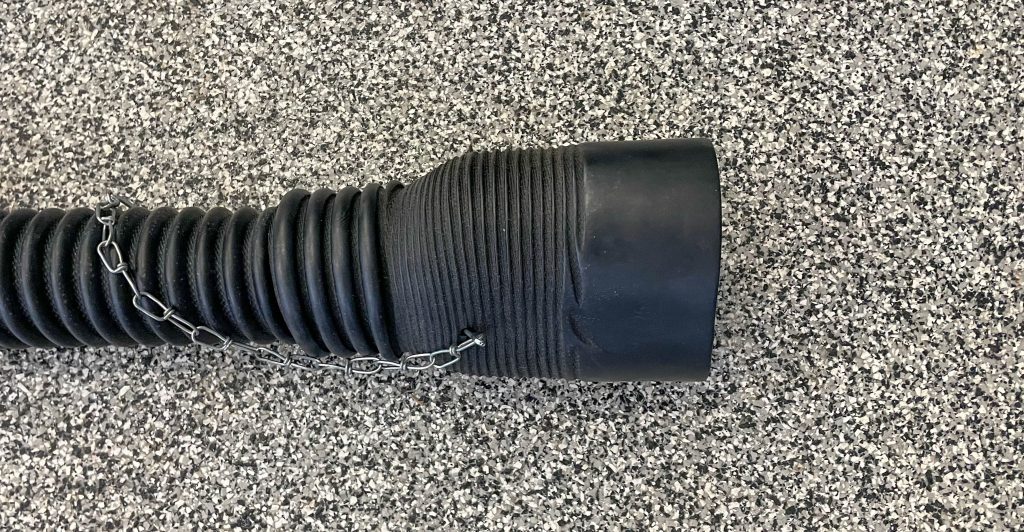
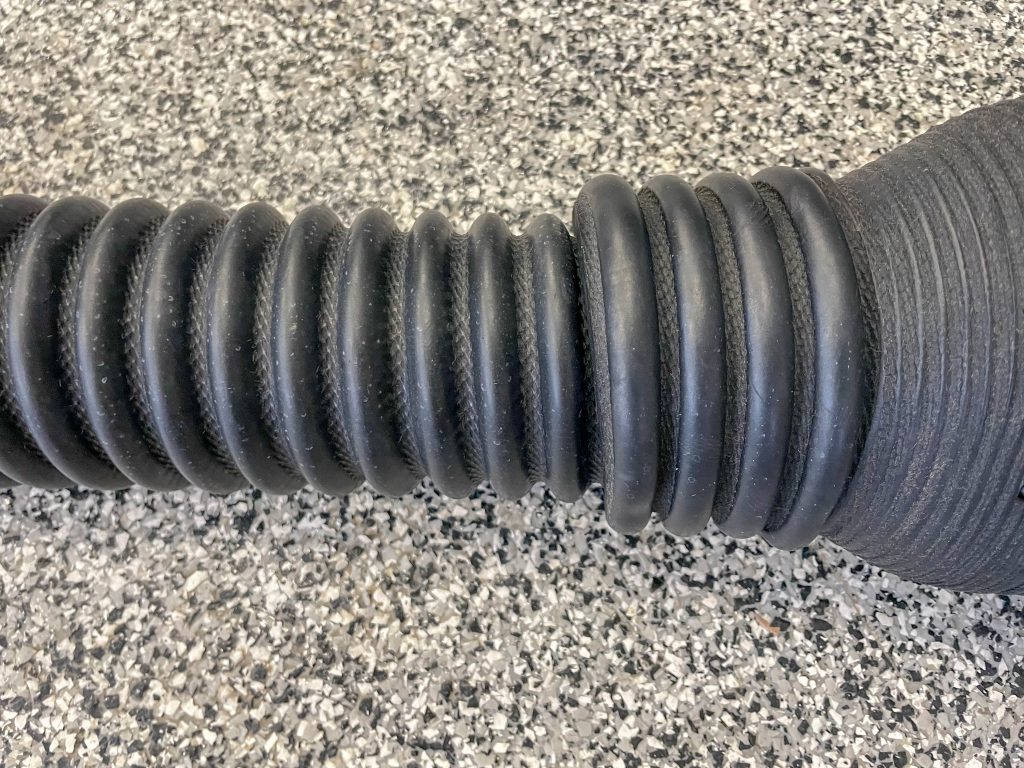
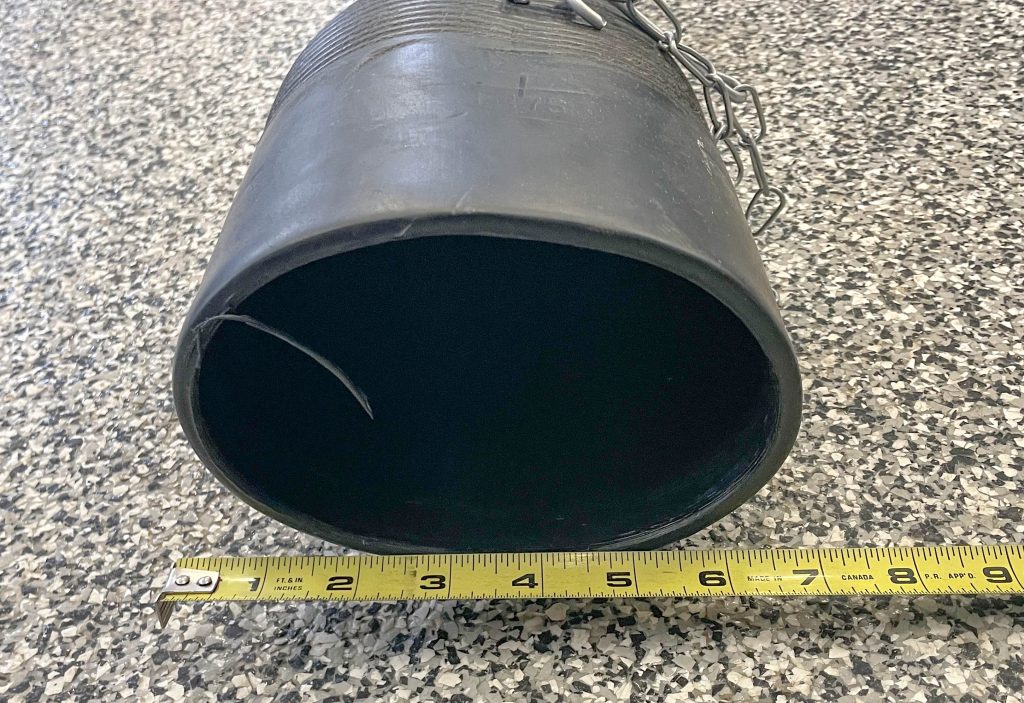
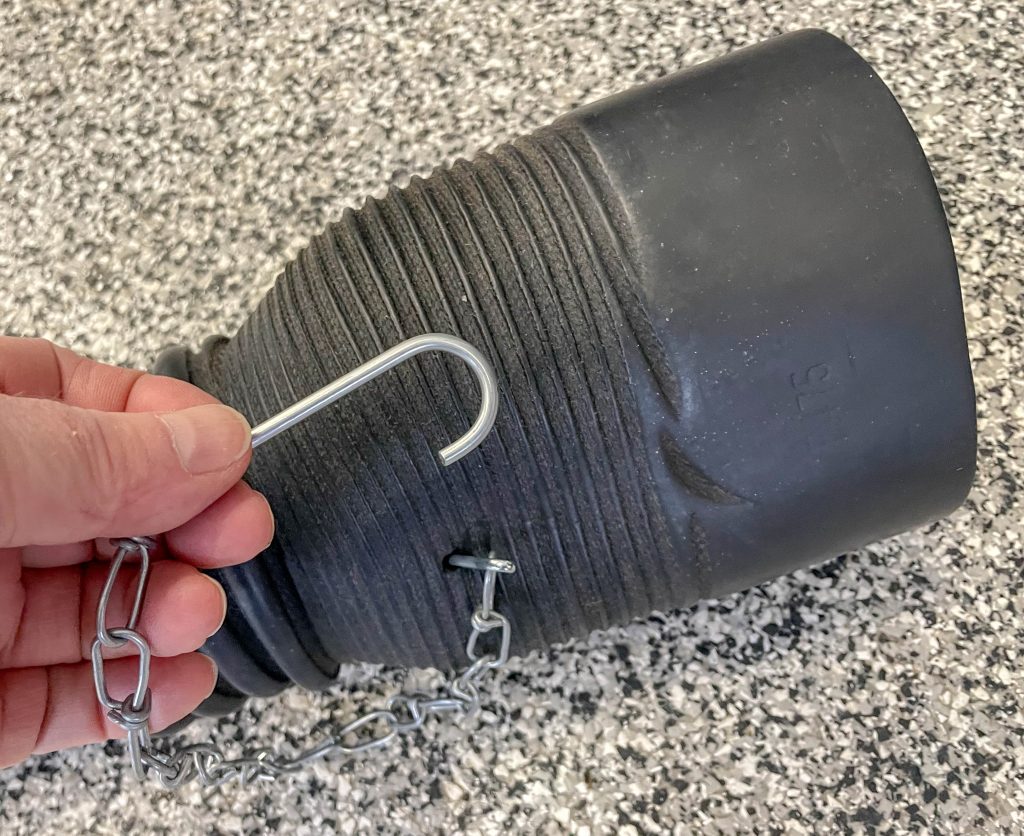
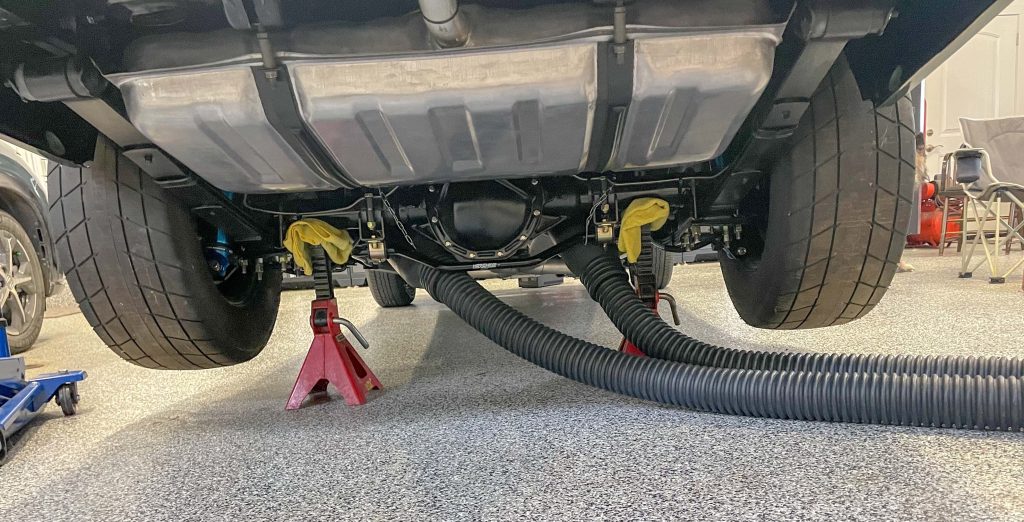

Comments